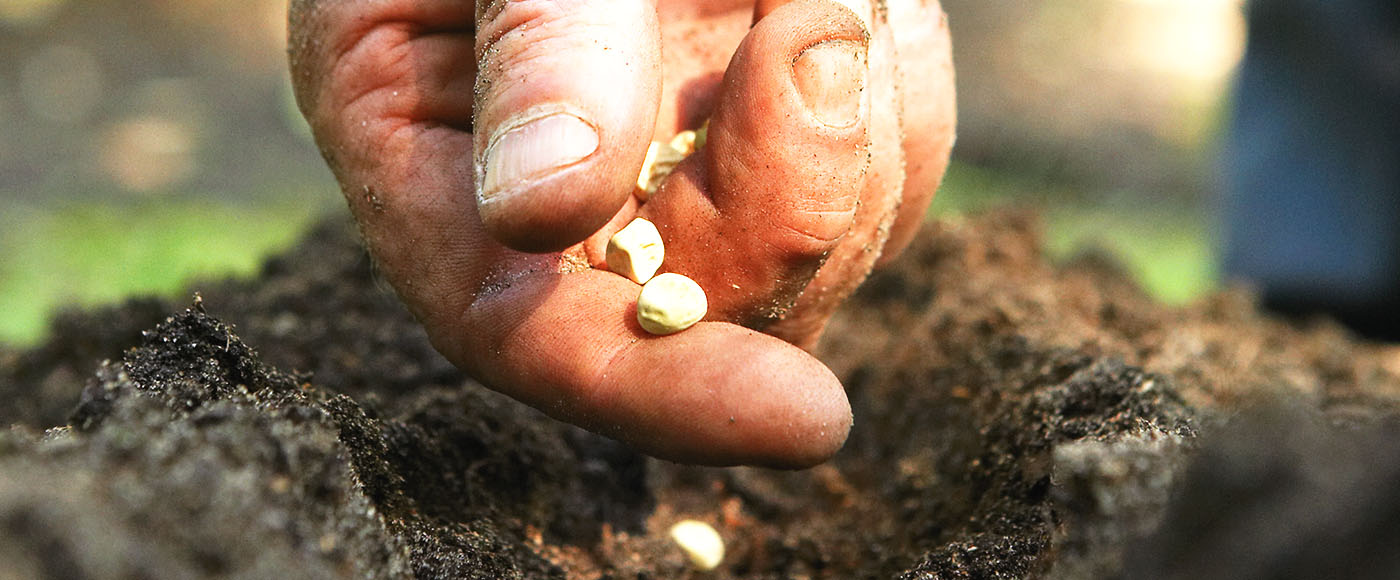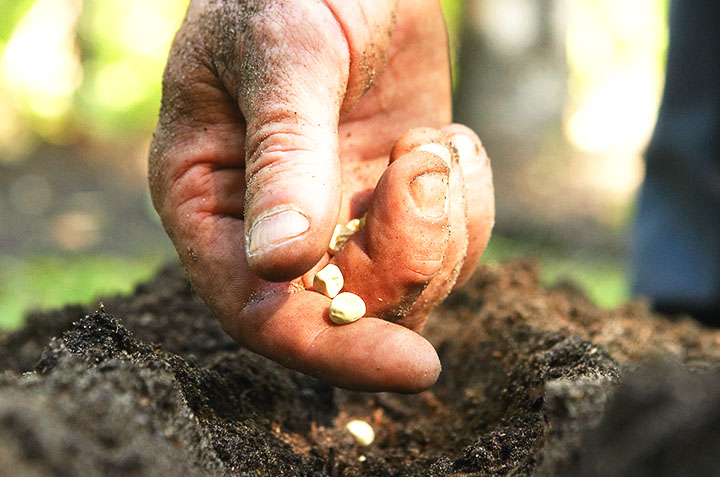Plants need to be acclimatized to the outdoors a few days before they go into the ground. They should ideally spend three or four days outside in the shade (12 °C and up), but bring them inside at night if the temperature drops to 5 °C or less. Then two or three days of morning sun exposure for two to three hours and your plants are ready for the garden.
Cover all the roots and fertilize with a transplant fertilizer or, even better, chicken manure pellets.
Even plants purchased at a nursery should be acclimatized for a few days before they are planted in the garden. You can shorten the acclimatization period but plants may experience a greater shock after transplantation and have more stunted growth.
Choose a cloudy or even rainy day to transplant to prevent your plants from getting heatstroke or sunburned.
Planting in the ground
To sow in the ground, dig a small trench with a finger and place the seeds. Follow the directions on the seed packet regarding ideal depth and spacing, plus the amount of seeds to plant. It is better to plant too few than too many. When it comes to lettuce, radishes, carrots, beets, etc., planting sparsely now will reduce your work later on when it comes time to thin out your plants. After planting, water gently to avoid disturbing the seeds.
Thinning consists of pulling up some to reduce the density of small plants and to ensure the maximum growth of the remaining ones. For example, carrots should be planted 5 cm (2 inches) apart.
Plant arrangements
Tall plants (tomatoes): at the back of garden to avoid putting shadows on their neighbours.
Small plants (carrots and lettuce): in the foreground.
Early plants (radishes and lettuce): should be planted on the edges of the garden so new seedlings can easily be planted in August, when the weather becomes cooler.
Bulky plants (melons and cucumbers): should be placed at the four corners of the garden to allow them to expand outward.


